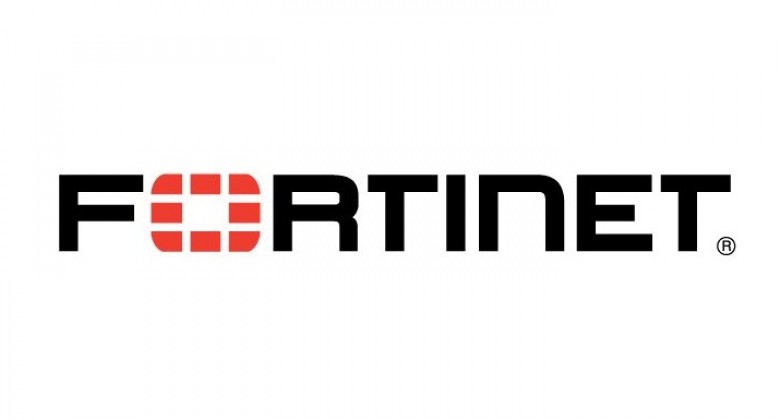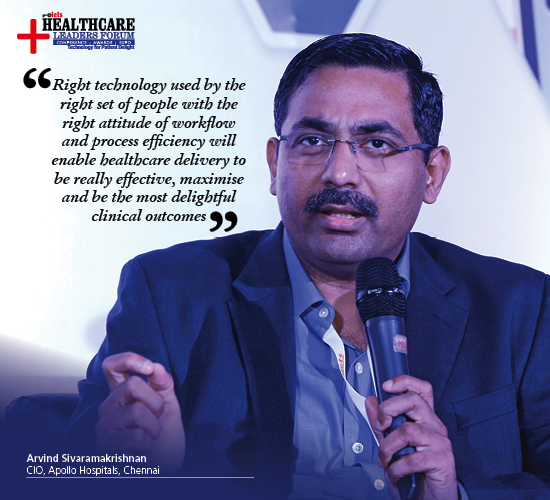As the healthcare industry in India goes through an expansion spree and gears up to become the best-in-class, IT is increasingly being embraced and adopted by healthcare organisations. While for some organisations the motivation for IT implementation is propelled by intention to automate and modernise their functioning, many others are doing it simply to follow the fad.
Whatever the reason, ‘e’ has slowly started getting the better share of healthcare (although long awaited). However, the trend is quite new and very nascent, as compared to other countries. There is a clear crunch of adequately qualified and relevantly experienced IT manpower in this domain and so far it has not been smooth sailing for most organisations.

 Among all this, people who are facing most of the brunt are those who are managing IT in healthcare organisations. While the coveted designation of Chief Information Officer (CIO) has quite smartly been adopted by some of the big players in the industry, to a large extent, it remains an ornamental position in the corporate structure, with limited authority and at times with just a shadow power. This issue emerges time and again during interactions with such people.
Among all this, people who are facing most of the brunt are those who are managing IT in healthcare organisations. While the coveted designation of Chief Information Officer (CIO) has quite smartly been adopted by some of the big players in the industry, to a large extent, it remains an ornamental position in the corporate structure, with limited authority and at times with just a shadow power. This issue emerges time and again during interactions with such people.
Notwithstanding the criticality of the role of a CIO in a service organisation, or for that matter, practices in other industry sectors (such as – banking, pharma, manufacturing, retail or airlines), most healthcare organisations in India are still merely paying lip-service with their CIOs and/or IT Heads.
In reality, the corporate power centre remains with CEOs/COOs/CFOs, particularly when it comes to actual decision-making like IT budgeting, IT investments and in some extreme cases, even IT procurement and implementation. Often, IT plans proposed by CIOs are derailed by their better ‘Cs’ (if not by high-powered doctors with a strong clout and fan following within the organisation). Reasons would be anything starting from lack of funds, weak business case, internal resistance or many a time, just ignorance.

Quite evidently, there is a real need to rationalise the power play inside corporate boardrooms!
|
Pain-points for IT in Healthcare |
|
Interestingly, it is not just the CIO who faces flak. Vendors and suppliers are equally at a loss when they get pushed into such a corporate cauldron. Often, they find themselves stuck in the midst of a myriad of decision makers, with their ever-widening differences in opinion, requirements, specifications, and ‘ego’ of course. Very often, vendors complain about this peculiar problem with healthcare organisations, wherein, there is never a single point of decision when it comes to IT projects. It is only after countless rounds of meetings, endless number of repeat presentations and well-oiled ego massaging right from down below to the top, which gets them somewhere near to project finalisation.
However, the saga just doesn’t end there… it’s a different story altogether at the implementation and testing stage. Until recently, most hospitals would not have in-house IT experts or consultants, and they would have hardly invested adequate time or resource in preparing a concrete IT roadmap for themselves. Thus, in most cases, they would not have much homework done before they call in vendors. It is often assumed by the management that IT implementation is a stand alone, hands-off activity and vendors should be able to provide solutions to any and every problem that they are facing at the moment.
Surprisingly, IT is perceived not with a systematic and participatory approach but just as if an off-the-shelf, ready-to-use, one-stop solution. Moreover, almost every doctor, nursing staff and administrative utive would have their own opinions about the kind of functionality they need or the type of user interface they require… and not always do they add value to the software intelligence. Customisation requests can be as ‘insightful’ as placing a particular tab/button from right to left or top to bottom… a serious challenge indeed!
IT Prospects in Healthcare Industry – Boom and Bottlenecks
Healthcare is possibly among the most data-critical, information intensive and knowledge driven service sectors. Yet, for long, the industry (particularly in the Indian context) has been one of the slowest adopters of IT.
Currently, the IT penetration in Indian healthcare industry is way too small compared to global standards and according to industry analysts, it will be a while before the health IT market blossoms. However, there is a silver lining to this � leading market research firms and IT industry experts have projected India among the fastest growing healthcare IT markets in Asia, following China.
Interestingly, the reason for such slow market growth for health IT and hospital automation solutions and services, is not solely due to lack of funds of healthcare providers. Major investment is already happening for healthcare infrastructure development/expansion and medical equipment, but not comparably so for health IT. While the overall healthcare market in India is expected to reach nearly USD 70 billion by 2012, the potential for medical equipment market over the same time period is pegged at USD 18 billion, while that of health IT market at USD 3 billion.
Let’s look into what is really holding back the healthcare sector from making IT investment a priority �
Legacy Lock
 Traditionally, healthcare service organisations have always kept a distance from trends and developments in the mainstream IT industry and remained in silos. Medical services are often thought of as stand-alone interaction between patients and doctors, and the procedures carried thereof, with simple paper based information and filing system, along with a general acceptance for the service to be time-consuming and cumbersome. Doctors in their traditional role would not bother to spend any time on recording, storing or managing patient data and would only do diagnosis and prescribing. Lack of competitive environment also kept away the need for having professional business approach of healthcare institutions, and thereby, any requirement for integrated information management systems for clinical or business intelligence.
Traditionally, healthcare service organisations have always kept a distance from trends and developments in the mainstream IT industry and remained in silos. Medical services are often thought of as stand-alone interaction between patients and doctors, and the procedures carried thereof, with simple paper based information and filing system, along with a general acceptance for the service to be time-consuming and cumbersome. Doctors in their traditional role would not bother to spend any time on recording, storing or managing patient data and would only do diagnosis and prescribing. Lack of competitive environment also kept away the need for having professional business approach of healthcare institutions, and thereby, any requirement for integrated information management systems for clinical or business intelligence.
S(Low) Return-on-Investment
 It is often difficult for healthcare organisations to comprehend the benefit (in financial terms) of IT investments in their organisation. With traditional business rational for investments (‘quick returns’) it stands for a marginal chance with decision-makers to approve anything that cannot show how the input cost is going to be recovered quickly. This again relates to the fact that, traditionally, there has been no emphasis on concepts of ‘service excellence’, ‘customer care’ or ‘business intelligence’ in healthcare sector. However, with the arrival of private sector participation in this industry, these are fast becoming a norm, rather than exception. It’ll be a while before top-notch of hospitals starts appreciating the fact that automation and intelligent IT systems (moving beyond just patient registration, billing, accounting) will help them in saving substantial cost in the long run by gaining operational excellence, improving service turn-over time, lowering inventory, and also improve future business potential by gaining goodwill through customer satisfaction and delight.
It is often difficult for healthcare organisations to comprehend the benefit (in financial terms) of IT investments in their organisation. With traditional business rational for investments (‘quick returns’) it stands for a marginal chance with decision-makers to approve anything that cannot show how the input cost is going to be recovered quickly. This again relates to the fact that, traditionally, there has been no emphasis on concepts of ‘service excellence’, ‘customer care’ or ‘business intelligence’ in healthcare sector. However, with the arrival of private sector participation in this industry, these are fast becoming a norm, rather than exception. It’ll be a while before top-notch of hospitals starts appreciating the fact that automation and intelligent IT systems (moving beyond just patient registration, billing, accounting) will help them in saving substantial cost in the long run by gaining operational excellence, improving service turn-over time, lowering inventory, and also improve future business potential by gaining goodwill through customer satisfaction and delight.
Technophobia
 Even if the top management of a hospital is willing to go for IT implementation, often the biggest hurdles are found among the primary beneficiaries � essentially, nursing staff, administrative personnel and doctors, resulting out of their fear of technology and computers. However, it has nothing to do with incapability of personnel themselves, but simply due to their non-acquaintance with IT products and systems during their early career. Typically, a systematic training and capacity building plan can help in getting over with any technology aversion among staff members. Also, it often helps in winning over the confidence of older staff members through formal or informal orientation by young, IT-friendly people within the team. This can be achieved by identifying ‘champions’ or ‘advocates’ of technology from among existing people and mobilising them to get a quicker buy-in from the rest. This approach is equally applicable for both doctors and non-medical staff, and it has been found (in many cases) to be a very effective way of breaking the initial barriers in introducing computer-based working environment.
Even if the top management of a hospital is willing to go for IT implementation, often the biggest hurdles are found among the primary beneficiaries � essentially, nursing staff, administrative personnel and doctors, resulting out of their fear of technology and computers. However, it has nothing to do with incapability of personnel themselves, but simply due to their non-acquaintance with IT products and systems during their early career. Typically, a systematic training and capacity building plan can help in getting over with any technology aversion among staff members. Also, it often helps in winning over the confidence of older staff members through formal or informal orientation by young, IT-friendly people within the team. This can be achieved by identifying ‘champions’ or ‘advocates’ of technology from among existing people and mobilising them to get a quicker buy-in from the rest. This approach is equally applicable for both doctors and non-medical staff, and it has been found (in many cases) to be a very effective way of breaking the initial barriers in introducing computer-based working environment.
Human Capacity Crunch
 Many hospital automation projects get stalled or delayed, simply because of lack of able personnel who can understand IT and technology from a hospital’s viewpoint, and can identify the solutions that will fit best. Even those who can, face the problem of them not being equally adept in clinical, operational and administrative domains, adding to the existing woes. This problem can be solved by developing adequate IT capacity in people from a medical background. Due to absence of professional programs that can develop IT capacity among medical doctors, such persons are always few in number and hard to find. However, of late, some of the reputed healthcare institutions in the country have realised this need and introduced specialised courses to develop appropriate human capacity for this purpose.
Many hospital automation projects get stalled or delayed, simply because of lack of able personnel who can understand IT and technology from a hospital’s viewpoint, and can identify the solutions that will fit best. Even those who can, face the problem of them not being equally adept in clinical, operational and administrative domains, adding to the existing woes. This problem can be solved by developing adequate IT capacity in people from a medical background. Due to absence of professional programs that can develop IT capacity among medical doctors, such persons are always few in number and hard to find. However, of late, some of the reputed healthcare institutions in the country have realised this need and introduced specialised courses to develop appropriate human capacity for this purpose.
Regulatory & Legal Environment
 Currently, there is neither a direct incentive nor compulsion for the healthcare industry to either automate their operations or transit to electronic form of medical record keeping/reporting. Often, existing legal environment will be put on a backburner for the entire purpose of total electronic environment in hospitals. Weak cyber laws and IT laws do not always acknowledge e-records as sufficient and tangible evidence of proof.
Currently, there is neither a direct incentive nor compulsion for the healthcare industry to either automate their operations or transit to electronic form of medical record keeping/reporting. Often, existing legal environment will be put on a backburner for the entire purpose of total electronic environment in hospitals. Weak cyber laws and IT laws do not always acknowledge e-records as sufficient and tangible evidence of proof.
IT Adoption and Planning Issues in Healthcare Organisations
By: Abhishek P. Singh, Principal Consultant & Dr. Amit Kumar Talele, Senior Consultant, Technopak Advisors – Healthcare Practices
Rapid development and innovations in information technology have played a significant role in increasing efficiencies across various industries. However the healthcare sector, especially hospitals have been lagging in adoption of information systems due to a combination of factors mainly including costs and implementation issues.
Most hospitals in India, barring the few A class facilities (existing and upcoming), still rely on paper records which are not only difficult to maintain but also time consuming in terms of retrieving data or developing effective decision support tools. In multi-specialty tertiary care hospitals, care-givers depend heavily on continuous monitoring and smart decision support tools, which in turn depend on availability of adequate information technology.
Role of information systems in hospitals can be broadly divided in terms of decision support in finance and medical services. However we are focusing on information systems mainly with respect to medical services.
-
Factors influencing investment decisions in hospital information systems
-
Availability and Inter-operability: Multiple modules are available for different operational processes. E.g. billing module, pharmacy module, Physician module, OT module, IP module, PACS, etc. Hospitals have to uate the availability considering their specific requirements.In the absence of a single vendor agreement, irrespective of a new or existing facility, the hospital IT team has to ensure inter-operability of the modules. The entire information systems network has to function seamlessly and be able to consolidate data at appropriate levels. e.g. data from admission module has to flow seamlessly into the IP module as well as the billing module.
Clinical pathways have been demonstrated to significantly improve clinical outcomes. Integration of clinical pathways into hospital information systems needs alignment with the operations processes and customisation, which in turn affects the overall costs.
The HIS is also expected to be integrated with backend support systems i.e. Accounts & HR module. -
Multi-facility Integration: Rapid expansion of hospital groups across the country and prence of the hub and spoke model has created a need for sharing data across locations. This has a technical impact on the nature of systems and hence influences IT investment decisions. Besides, there is further challenge for technology as different hospitals under the same umbrella often have different operational processes.
-
Future Readiness: Major healthcare providers realise the importance of technology for business continuity and enhancement. More business is coming in through health insurance players than ever before. Medical tourism from western countries is also accelerating the pace in a more organised manner with international healthcare insurance players tying up directly with Indian healthcare providers. Both scenarios will have increasing demand on the Indian providers to be transparent and technology compliant as per the requirements of insurance companies.
-
Budget: Hospitals are capital intensive and have a long gestation period. This coupled with intense pressure on margins and the high cost associated with adoption of hospital information systems poses a significant hindrance to wide-spread implementation of information systems. (Complete information system solutions for multi-specialty tertiary care hospitals can cost anywhere in the range of 3-5% of the total capital expenditure.)
-
Enhancement of Positive Outcomes: According to a 1999 report by the Institute of Medicine in Washington DC, there are 44,000 to 98,000 annual deaths in the US caused due to medical errors, costing the system around 35+billion USD of which half is accounted to preventable medical errors. Indian healthcare sector does not offer visibility into such statistics. But, these figures can be significantly reduced with decision support systems like computerised physician order entry (CPOE) with intelligent alert systems. This offers a clear potential for hospital information systems to align with the top management’s commitment to the issue.
-
-
Difference between Green Field and Brown Field hospitals in IT planning, budgeting and implementation
-
Change in process and user acceptance: Information systems help to streamline and increase efficiency of operations. Hence, processes in a heavy IT environment can be significantly different than those compared to conventional paper based hospitals. This results in greater flexibility advantage for Green Field hospitals that have to primarily develop processes in alignment with the information systems. However the situation is challenging for Brown Field hospitals that have to analyse existing processes and re-engineer them for alignment with information systems. While this on its own sounds innocuous, the challenge lies in the ability of the implementation team to balance issues related to acceptance of the process change by users.
-
Staff Training: Existing hospitals have a full manpower compliment that needs to be trained to use new systems. This results in comparatively higher implementation costs for Brown Field hospitals.
-
Integration with existing information systems: Another challenge in Brown Field IT implementation can be attributed to the technical issues related to integration of existing and new information system modules. It is not unlikely to see different vendors having different operating platforms, which leads to higher costs for integration.
-
-
Effect of human factor in the success/failure of IT implementation in healthcare service organisations
-
Change Management: One of the most significant factors affecting the success of information systems implementation is effective change management. This is especially more pronounced in Brown Field hospitals. As discussed above information systems result in significant change of operational processes. Adding to this the intensive training requirements of the staff lead to a general resistance to change.
-
The ability of the project manager to be able to achieve system acceptance and active participation of the users is crucial to the success of the overall implementation.
-
General IT skills of healthcare work force: A general trend seen across multiple countries is that inadequate levels of IT training and abilities leads to apprehension and reluctance to accept IT systems. However, as observed currently, a significant focus on health information systems in educational institutions should gradually help to achieve greater acceptance.
-
-
Understanding of the long term benefits of Information Systems among healthcare decision makers
-
Absence of structured studies: Most of the healthcare decision makers are well aware of the potential benefits of information systems. However in the absence of structured case studies indicating the economic benefits of information systems in India, there is hesitation to invest adequately.
-
Indian Healthcare has seen few large hospitals adopting information systems to various levels which can be good sources of case studies to showcase the real financial and quality related benefits of information systems. However, most IT marketing strategies and communication focus on product features rather than the overall long term quality and economic benefits to hospitals.
There is an opportunity for IT vendors/companies, as a community, to take up these hospitals as case studies which will help the growth of the health information systems market in India. 
|
Q. What are the biggest challenges faced by IT Managers of healthcare organisations? A. Probably, the biggest challenge for IT managers in healthcare industry is to convince their COOs/CFOs that intangible benefits gained through IT actually adds-up to long term revenue gain for the organisation. The IT roadmap set up by CIOs is often difficult to get accepted at the top management level. Although, the time has come when we are seeing substantial increase in IT budgets as compared to earlier years, it still remains as a heavy responsibility for CIOs to keep THEM updated on every benefit, at all steps, and convince that IT investments have not gone for waste. Q. What is the best way of tackling the general IT apathy among doctors, nurses and administrative staff and its effect on the success of IT implementation? A. No doubt the best way is to show them the direct benefits that come from automation. While doctors will be happy to see the clinical analytics from the data entered by them, nurses need to be shown that only automation can bring quality and save time to make them more efficient. For instance, the huge stock spread across hospital wards can have an easy control by a good materials management system in place. Also, IT systems help in easy distribution of work load – like doctors enter the order, nurses administer the drug and pharmacy makes the issue. If this would have been a manual process, it would become a completely nurse centric activity. Q. How important is the vision and intention of top management in implementing IT in a healthcare enterprise? A. While management thinks that IT is the backbone of the company, it is the responsibility of CIOs to present a clear road map in front of them. A very important step in this direction is to have a ‘IT Governance Body’ formed by the management, which can take the responsibility of prioritising the IT road map. This approach always makes the management expect an outcome, which forces them to keep others on their heels to deliver faster results. Q. In what ways can you estimate the qualitative and quantitative returns of IT investment for a hospital? A. Any electronic transaction ends up in ‘quality’. More transactions we make, the richer our data becomes and this in turn, helps in making Business Intelligence (BI) work on it. With the help of this BI we can easily analyse and diagnose the organisation status, which translates into higher quality and commitment. Advanced automation and a rich MIS results in better time management and lesser manpower, and hence lower cost of operation. ROI cannot be justified better, if we can lessen manpower need. In addition, automation can also help us in delivering care right at the patient’s door-step, ensuring patient retention and hence better revenue performance. |
Be a part of Elets Collaborative Initiatives. Join Us for Upcoming Events and explore business opportunities. Like us on Facebook , connect with us on LinkedIn and follow us on Twitter , Instagram.


 “IT investments never go for waste “
“IT investments never go for waste “






